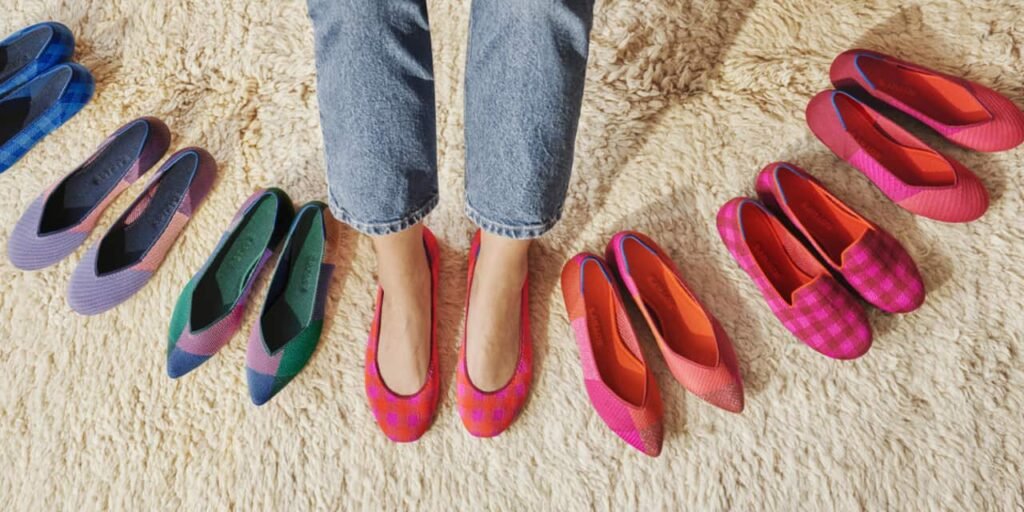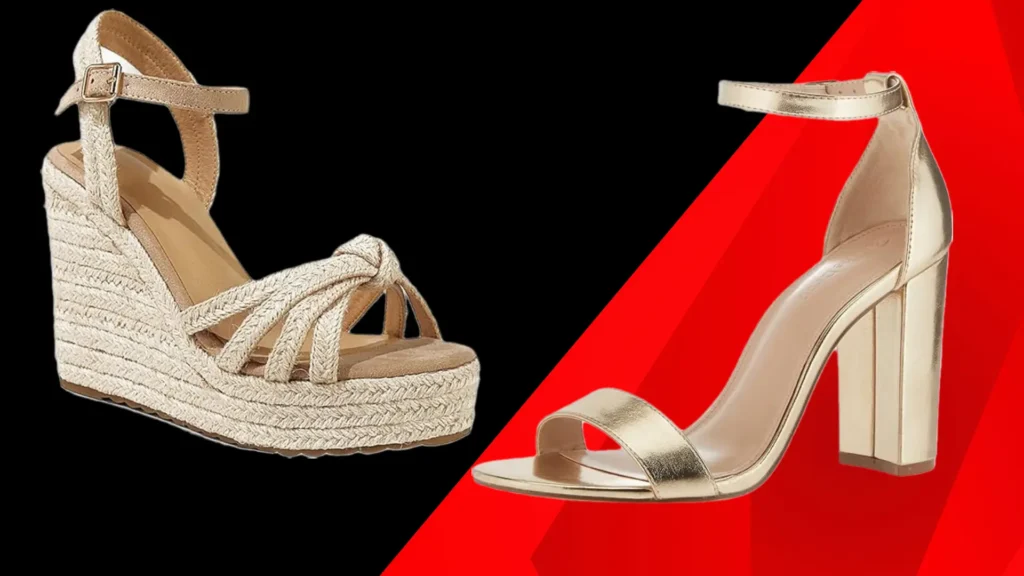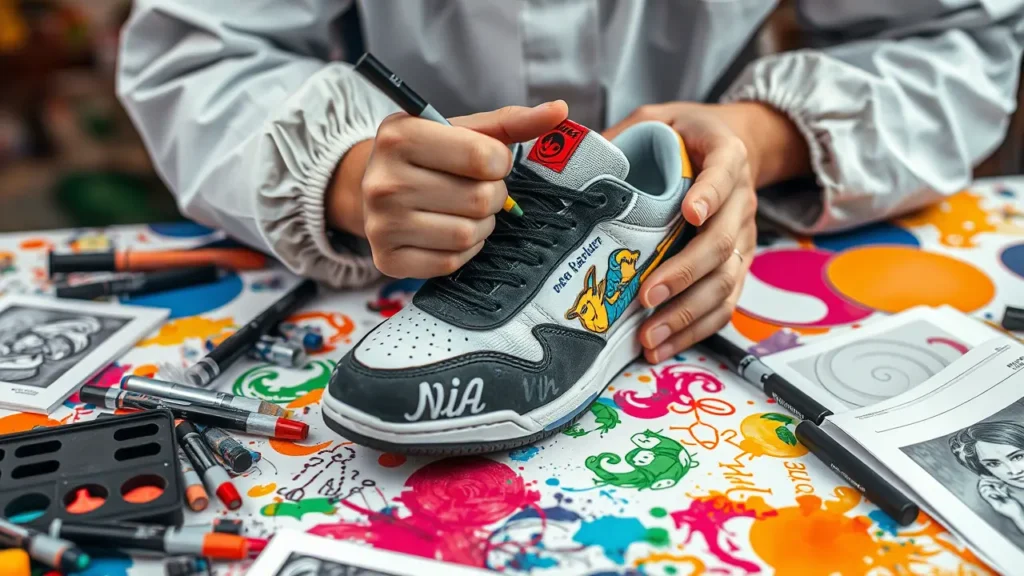In recent years, the fashion industry has undergone a significant transformation. Consumers are becoming increasingly aware of the environmental and social impacts of their purchasing decisions.
Footwear has grabbed as a focal point for sustainability efforts. From sneakers to sandals, brands are reimagining how shoes are designed, manufactured, and disposed of.
This article explores the rise of sustainable footwear and highlights some of the pioneering brands leading the charge.
What is Sustainable Footwear
Sustainable footwear refers to shoes designed, produced, and distributed with a focus on minimizing environmental impact and promoting ethical practices throughout their lifecycle.
It’s about creating footwear that’s kinder to the planet and its people. At its core, sustainable footwear tackles the downsides of traditional shoe-making.
Regular production relies on heavy production of cattle and leather. These resource-heavy materials involve deforestation and high-water usage. Some footwears are produced using plastic-based polyurethane. These materials are tied to fossil fuels.
Traditional footwear production generates significant waste—billions of pairs end up in landfills yearly—and involve questionable labor practices.
Sustainable footwear flips this script by emphasizing eco-friendly materials, reduced emissions, and longer-lasting and recyclable designs.
Several groundbreaking innovations have fueled the rise of sustainable footwear:
Brands are replacing conventional materials like leather and polyester with plant-based alternatives such as pineapple fibers (Piñatex), mushroom leather, recycled ocean plastic, and organic cotton. These materials minimize environmental harm.
Instead of following the traditional “take-make-dispose” model, many brands are embracing circularity. This means designing products that can be easily repaired, reused, and recycled at the end of their lifecycle.
Some companies offer take-back programs where customers can return old shoes to be repurposed into new ones.
Advances in technology have enabled brands to adopt cleaner production methods, such as waterless dyeing techniques and renewable energy-powered factories. These innovations help reduce greenhouse gas emissions and water consumption.
Leading sustainable footwear brands prioritize transparency by sharing detailed information about their supply chains, material sourcing, and labor practices. This openness builds trust with consumers who want to know exactly what they’re buying.
Why Sustainable Footwear Matters
The footwear industry is one of the most resource-intensive sectors in fashion. Traditional shoe production contributes to pollution. The manufacturing process is energy-intensive, with workers facing poor conditions in factories around the world.
As awareness grows about these issues, consumers are demanding change. According to a 2022 survey by McKinsey & Company, over 60% of shoppers consider sustainability when making purchases, with younger generations driving this trend.
In response, footwear companies are stepping up to meet this demand by adopting innovative practices that reduce their carbon footprint, conserve resources, and promote ethical labor standards.
Brands Leading the Way in Sustainable Footwear
Brands are leading the way in sustainable footwear by rethinking every stage of the shoe lifecycle—materials, production, design, and end-of-life solutions. They are balancing style and consumer appeal. Here’s how some standout brands are paving the path:
Pioneering Eco-Friendly Materials
Brands are swapping out resource-heavy traditional materials for sustainable alternatives. Their aim is to cut environmental harm without skimping on quality.
Allbirds crafts sneakers from merino wool, eucalyptus fibers, and sugarcane-based foam, slashing its carbon footprint. Its SweetFoam sole is derived from CO2-absorbing sugarcane.
Veja uses wild Amazonian rubber sourced from local cooperatives, organic cotton, and recycled plastic bottles.
Adidas, through its Parley partnership, turns ocean plastic into high-performance sneakers. This is intercepting waste before it hits landfills or seas.
Rothy’s spins single-use plastic bottles into knitted threads for stylish, washable flats. This endeavor helps divert millions of bottles from trash heaps.

Native Shoes leans into plant-based options like pineapple husk and cork. It is creating fully biodegradable kicks that break down naturally.
These material shifts aren’t just green—they’re redefining what footwear can be, making sustainability a selling point rather than a sacrifice.
Innovating Production and Design
Sustainability isn’t just about what goes into the shoe—it’s how it’s made. Leading brands are cutting waste and emissions while designing for longevity.
Adidas experiments with 3D-printing in its Futurecraft line to minimize excess material, alongside a pledge to use only recycled polyester by 2024.
Thousand Fell and Nisolo focus on modular designs—shoes that can be taken apart for repair or recycling, extending their life and reducing landfill contributions.
Allbirds labels every product with its carbon footprint, pushing transparency that challenges competitors to measure up.
Veja skips mass advertising and overproduction. This brand is keeping supply lean and waste low while paying fair wages to its producers.
By streamlining processes and building shoes to last, these brands are tackling the throwaway culture head-on.
Embracing Circular Systems
The endgame for many leaders is circularity. The aim is to ensuring shoes don’t just die in a dump. They’re closing the loop with creative solutions.
Rothy’s offers a recycling program where old shoes get turned into new ones.
Native Shoes’ Remix Project takes worn pairs and transforms them into playground mats, blending sustainability with community impact.
Adidas is testing biodegradable prototypes in its Futurecraft line. They are aiming for shoes that compost instead of cluttering landfills.
Thousand Fell incentivizes returns with discounts, making it easy for customers to keep the cycle going.
This focus on reuse and recycling is shifting footwear from a linear “make-use-toss” model to a sustainable loop.
Setting Industry Standards
Big names and startups alike are raising the bar, forcing the broader industry to follow.
Adidas uses its scale to normalize sustainability. Its ocean-plastic shoes and recycled material goals signal that eco isn’t niche anymore.
Allbirds open-sourced its SweetFoam tech. This is encouraging others to adopt it and amplifying the impact beyond its own line.
Veja’s decades-long commitment to fair trade and low-impact sourcing has inspired a wave of smaller brands to prioritize ethics over shortcuts.
Their influence ripples out, pressuring competitors to green up and get left behind as consumer expectations evolve.
These brands don’t just make sustainable shoes—they make sustainability desirable. Sleek designs, comfort, and storytelling (like Rothy’s bottle-count milestone or Veja’s Amazonian roots) hook buyers who might not otherwise care.
They’re proving eco-friendly doesn’t mean dowdy. It can be cool, functional, and aspirational.
It’s not all smooth strides. Scaling eco-materials can jack up costs, and recycling complex shoes (with glued soles and mixed fabrics) remains tricky. But leaders are innovating around these hurdles—whether through tech breakthroughs or take-back programs—showing the industry what’s possible.
Challenges Ahead for Sustainable Footwear
While the rise of sustainable footwear is promising, challenges remain. One major hurdle is cost. Eco-friendly materials and ethical manufacturing processes come with higher price tags. This is creating a challenge for making sustainable options accessible to budget-conscious consumers.
Additionally, scaling sustainable practices across global supply chains requires significant investment and collaboration between stakeholders.
Another challenge lies in consumer behavior. Despite growing interest in sustainability, many people still prioritize style, comfort, and affordability over environmental considerations.
Educating consumers about the long-term benefits of sustainable choices will be crucial for widespread adoption.
The rise of sustainable footwear represents a critical step toward a more responsible and resilient fashion industry. By prioritizing innovation, ethics, and transparency, brands are showing that it’s possible to create stylish, functional shoes without compromising the planet’s health.
As more companies join the movement and consumer demand continues to grow, the dream of a truly sustainable footwear industry becomes increasingly attainable.




